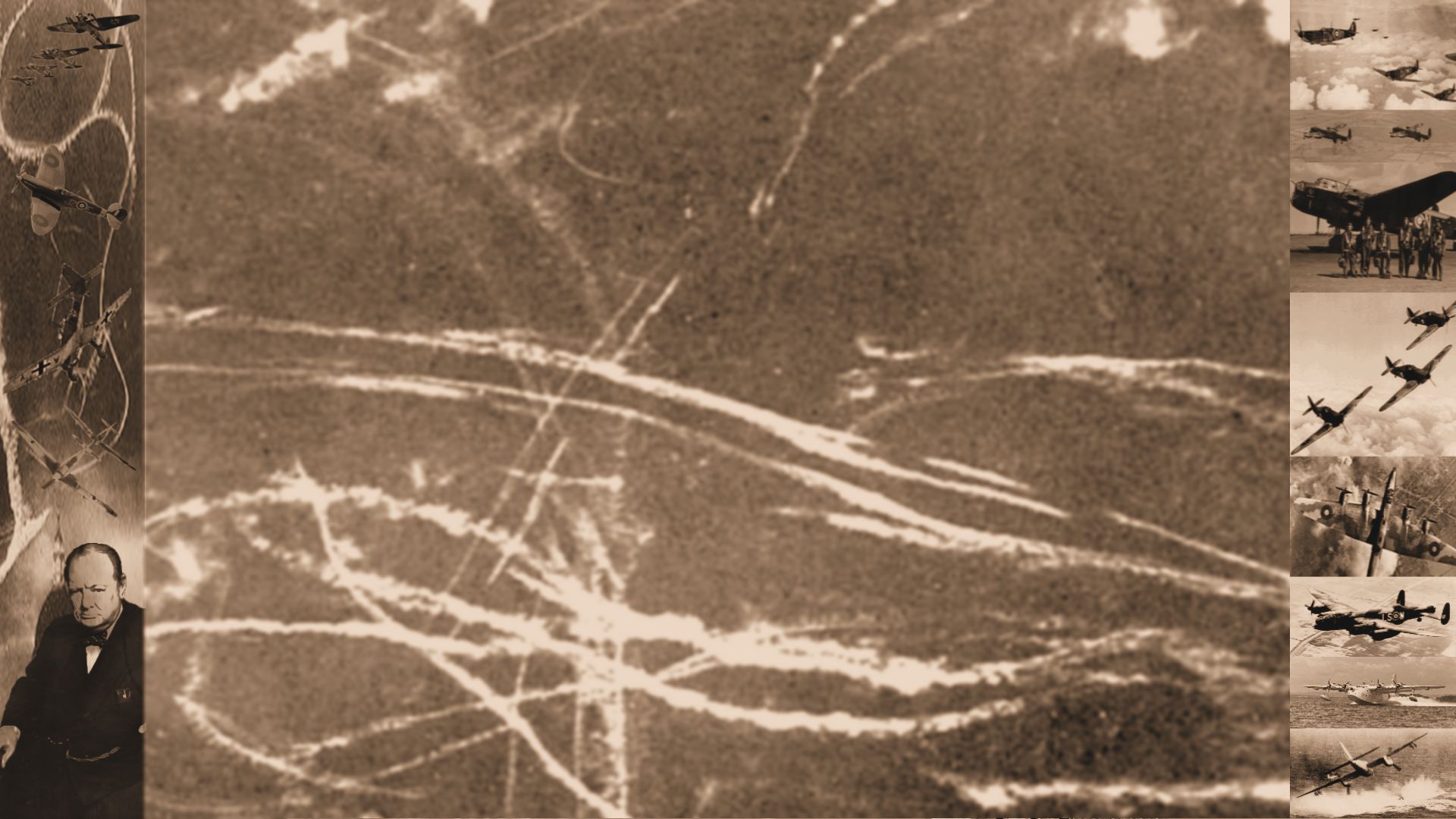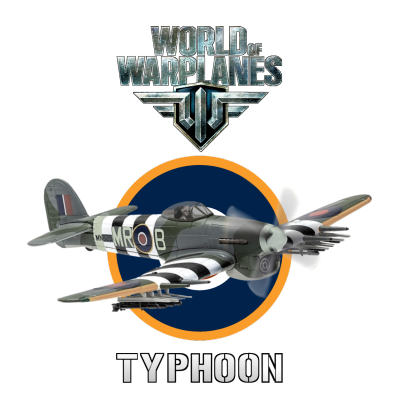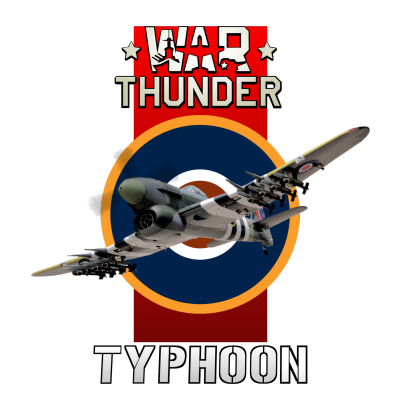The Hawker 'Typhoon' ('Tiffy' in RAF slang), was a British single-seat fighter-bomber, produced by Hawker Aircraft. It was designed to be a medium-high altitude interceptor, as a direct replacement for the Hurricane but several design problems were encountered, and it never completely satisfied this requirement. Originally designed to carry 12 .303 machineguns, it was redesigned to carry the then-unheard-of armament of four 20mm cannon, and was powered by the Napier Sabre, the first 2,000 h.p. engine. It became the subject of a quantity production order to be assigned to Gloster Aircraft, since Hawkers was thoroughly committed to the Hurricane and later to the Tempest. Its service introduction in mid-1941 was plagued with problems, and for several months the aircraft faced a doubtful future. However, when the Luftwaffe brought the formidable Focke-Wulf Fw190 into service in 1941 the Typhoon was the only RAF fighter capable of catching it at low altitudes; as a result it secured a new role as a low-altitude interceptor.
Back to Top
Development
Sir Sydney Camm, Hawker Aircraft's Chief Designer was already hard at work on the Hurricane's replacement, designed to meet Air Ministry Specification F.18/37 which called for a fighter with a top speed over 400 mph when the first production model of that famous airplane had yet to fly. The result was - at the time the first prototype was rolled out - the biggest single-seat, single-engine fighter ever designed, with the heaviest armament any traditional fighter had ever carried, and the most powerful engine ever installed in an airframe. Ordered 'off the drawing board' in 1939, the prototype Typhoon flew on February 24, 1940. Flight testing quickly revealed the dangerous effects of compressibility, of which little was known at the time. The thick wing also resulted in extreme slipstream buffet around the wing roots, due to the fact the engine was fitted as close to the leading edge of the wing as possible to preserve c.g. balance. Unknown at the time was the fact that the buffet also created a disturbed slipstream along the entire fuselage that became quite violent by the time it reached the tail. It would be early 1943 before it was discovered that the fuselage/tail joint was not strong enough to withstand these forces in a maximum-velocity dive, with the result that the joint was reinforced with the fishplates so prominent on the Typhoon afterwards. Nineteen pilots died due to catastrophic tail separation discovering this solution, which was the result of the sped-up development process. The first flight of the first Typhoon prototype, P5212, made by Hawker's Chief test Pilot Philip Lucas from Langley, was delayed until 24 February 1940 because of the problems with the development of the Sabre engine. Although unarmed for its first flights, P5212 later carried an armament of 12 .303 in (7.7 mm) Brownings, set in groups of six in each outer wing panel; this was the armament fitted to the first 110 Typhoons, known as the Typhoon IA. P5212 also had a small tail-fin, triple exhaust stubs and no wheel doors fitted to the centre-section. Although the Typhoon was expected to achieve over 400 mph (644 km/h) in level flight at 20,000 ft, the thick wings created a large drag rise and prevented higher speeds than the 410 mph at 20,000 feet (6,100 m) achieved in tests. The climb rate and performance above that level was also considered disappointing. In addition, when the Typhoon was dived at speeds of over 500 mph (805 km/h), the drag rise resulted in buffeting and trim changes. These compressibility problems led to Camm designing the Typhoon II, later known as the Tempest, which used much thinner wings with a laminar flow section.
Back to Top
In Service
The Typhoon first entered large-scale combat in the Dieppe Raid on August 19, 1942, with the Duxford Wing claiming one Do-217E shot down. From then on, the wing became more and more involved in countering the "tip and run" raids by the Fw-190A-4/U4 'Jabos' (fighter bomber raids) of JG26 and JG2, and later SKG10, with the squadrons operating from Biggin Hill and Manston as well as Duxford and Warmwell. By September, No's 1, 486 and 257 Squadrons had converted on to the Typhoon. As soon as the aircraft entered service it was immediately apparent the profile of the Typhoon resembled a Fw 190 from some angles, and this similarity caused more than one "friendly fire" incident with Allied anti-aircraft units and other fighters. This led to Typhoons being marked up with high visibility black and white stripes under the wings, a precursor of the markings applied to all Allied aircraft on D-Day. In early 1943, the RAF needed a dedicated ground attack fighter more than a 'pure' fighter, and the Typhoon was suited to the role. The powerful engine allowed the aircraft to carry a load of up to two 1,000 lb (454 kg) bombs, equal to the light bombers of only a few years earlier. The bomb-equipped aircraft were nicknamed 'Bombphoons' and entered service with No. 181 Squadron, formed in September 1942. By the end of 1943, 18 rocket-equipped Typhoon squadrons formed the basis of the RAF's Second Tactical Air Force (2nd TAF) ground attack arm in Europe. In theory, the rocket rails and bomb-racks were interchangeable; in practice, to simplify ordnance supply-lines, some 2nd TAF Typhoon squadrons (such as 198 Squadron) used the rockets only, while other squadrons were armed exclusively with bombs.
Back to Top
By the Normandy landings in June 1944, 2 TAF had 18 operational squadrons of Typhoon IBs, while Air Defence of Great Britain (ADGB) had a further nine. The aircraft proved itself to be the most effective RAF tactical strike aircraft, both on interdiction raids against communications and transport targets deep in North Western Europe prior to the invasion, and in direct support of the Allied ground forces after D-Day. A system of close liaison with the ground troops was set up by the RAF and army: RAF radio operators in vehicles equipped with VHF R/T travelled with the troops, often close to the front line. In situations where air support was needed, they were able to call up Typhoons operating in a 'Cab Rank', which then continuously attacked the targets marked for them (usually by smoke shells fired by mortar or artillery) until they were destroyed.
On 24 March 1945, over 400 Typhoons were sent on several missions each to suppress German anti-aircraft guns and Wehrmacht resistance to Operation Varsity, the Allied crossing of the Rhine river that involved two full divisions of 16,600 troops and 1,770 gliders sent across the river.
Production of the Typhoon, almost entirely by Gloster, was 3,317 machines. Hawker developed an improved version of the Typhoon, the Typhoon II, but the differences between it and the Mk I were so great that it was effectively a different aircraft, thus it was renamed the Tempest. By October 1945, the Typhoon was no longer in use as an operational aircraft.
Back to Top




